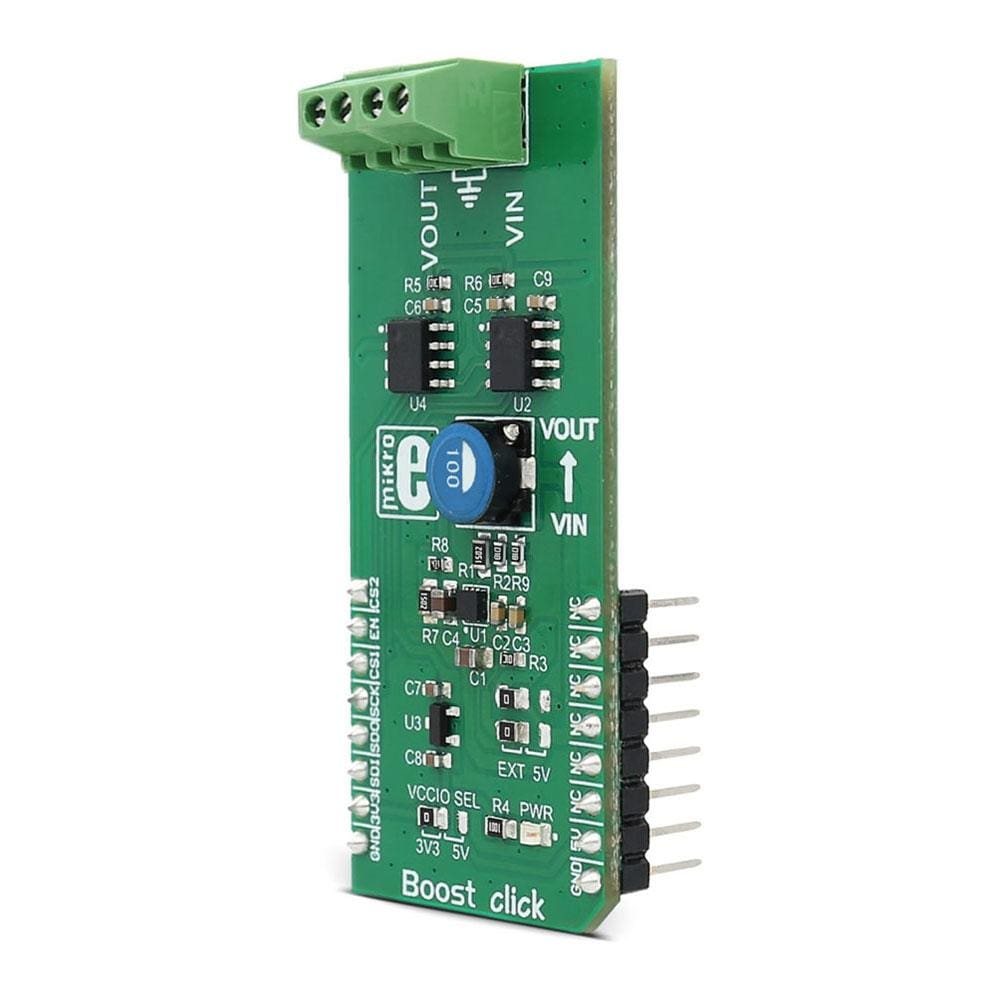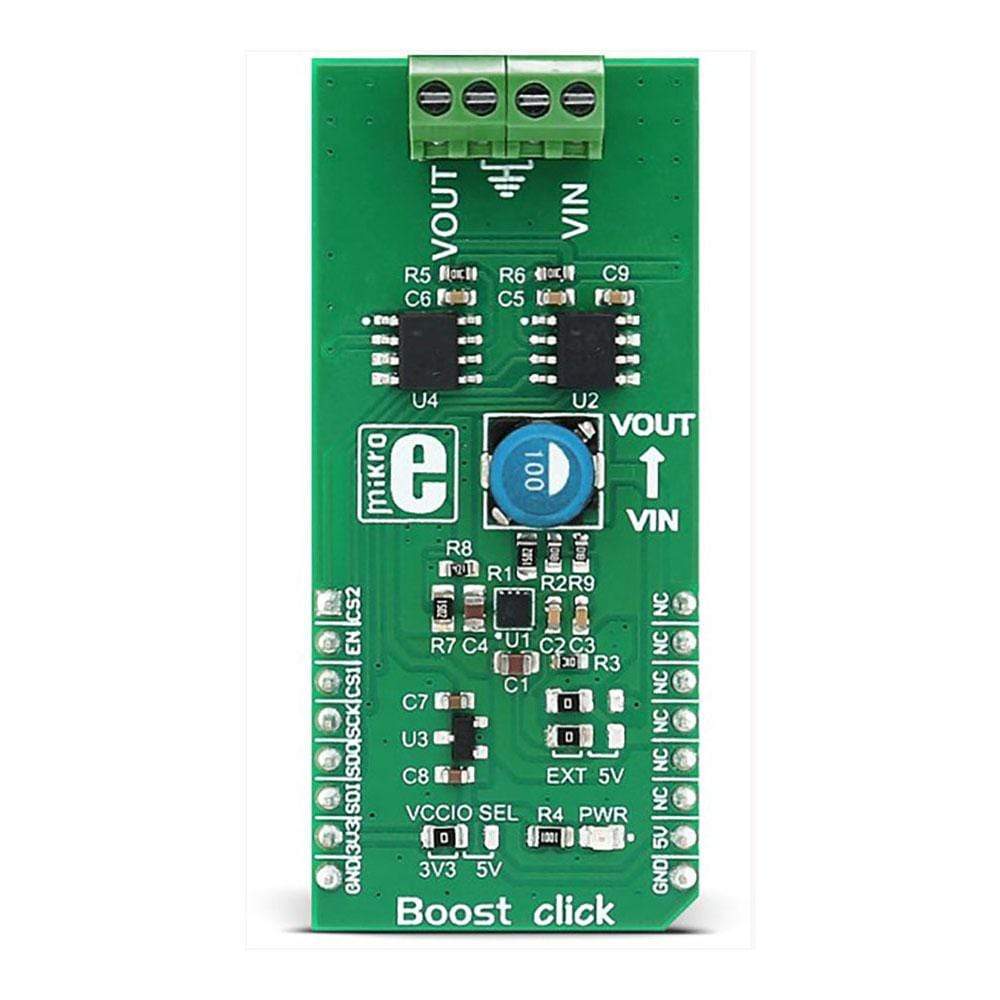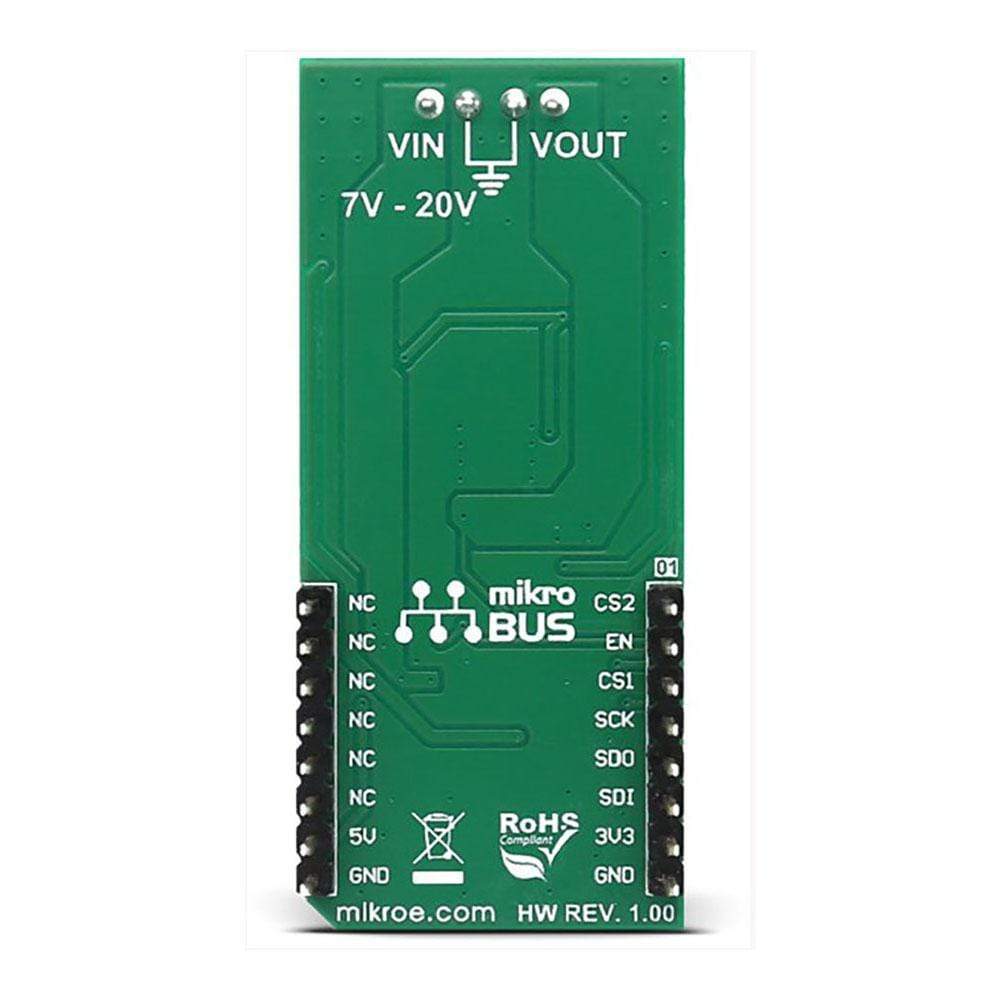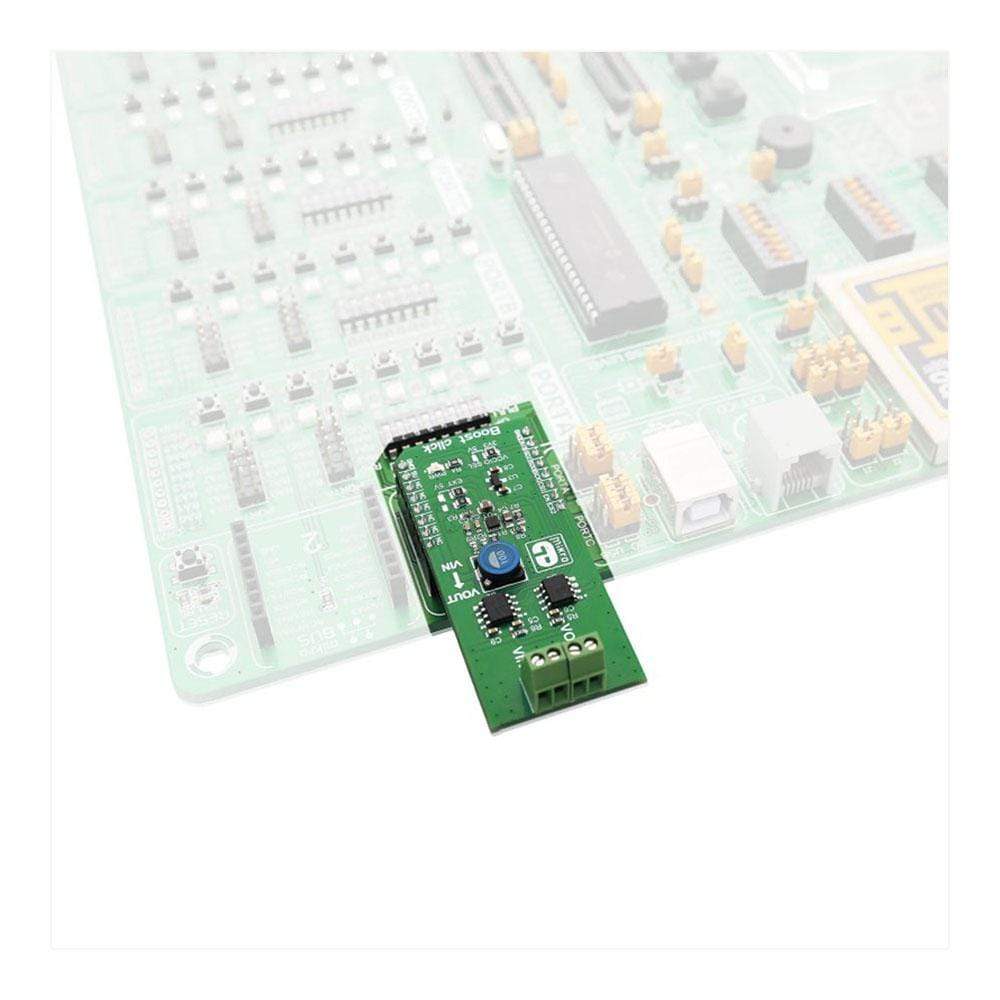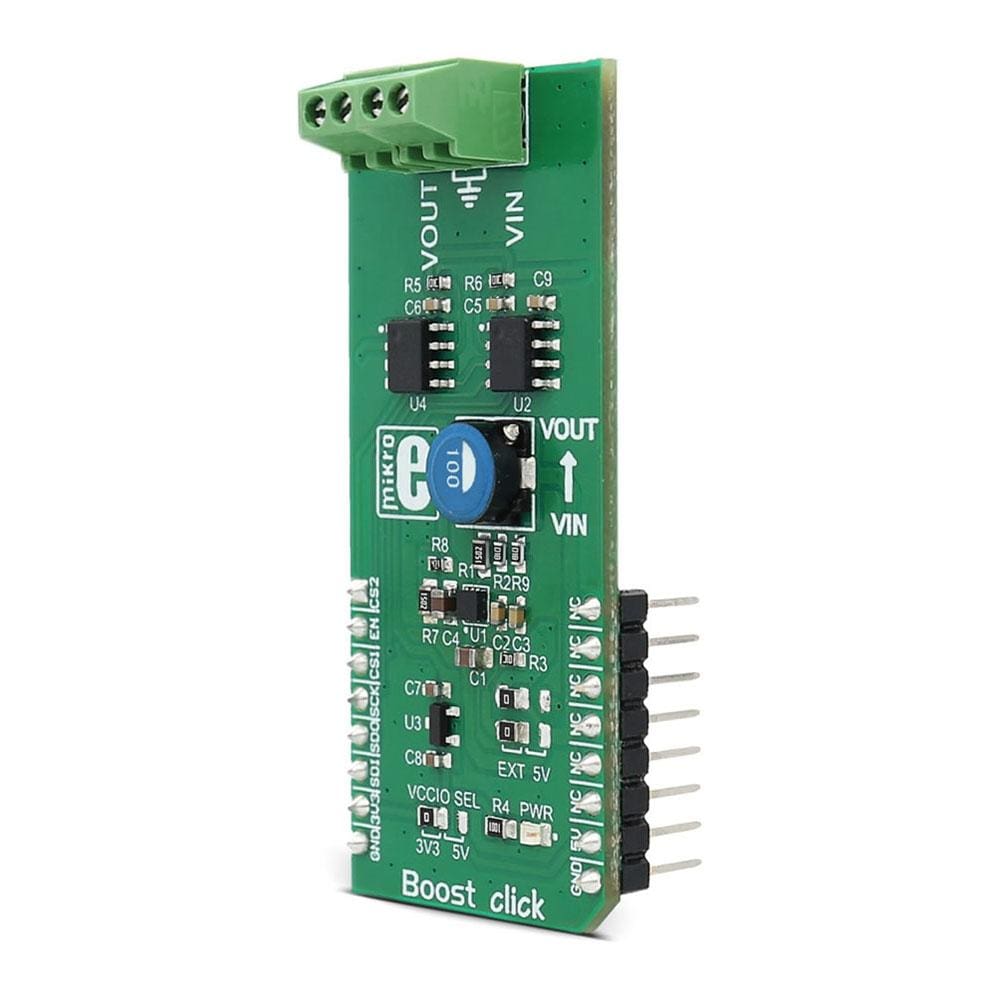
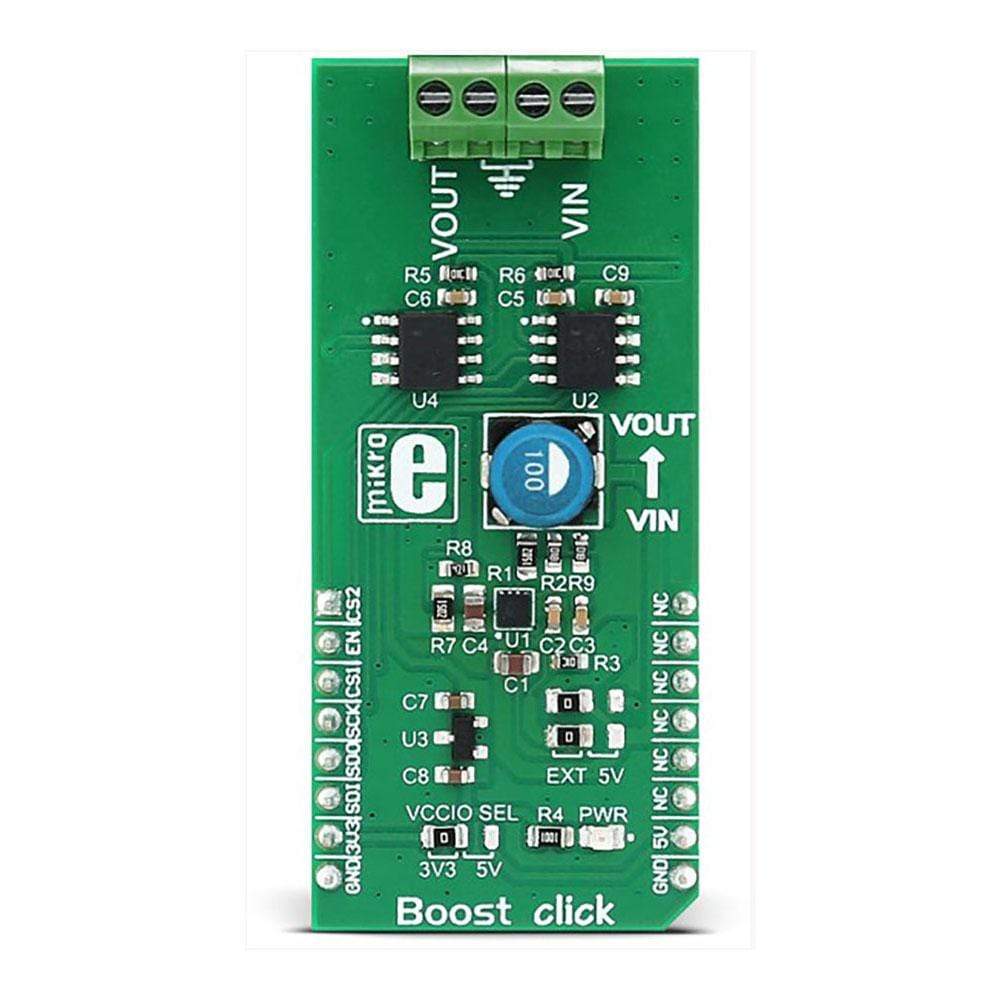
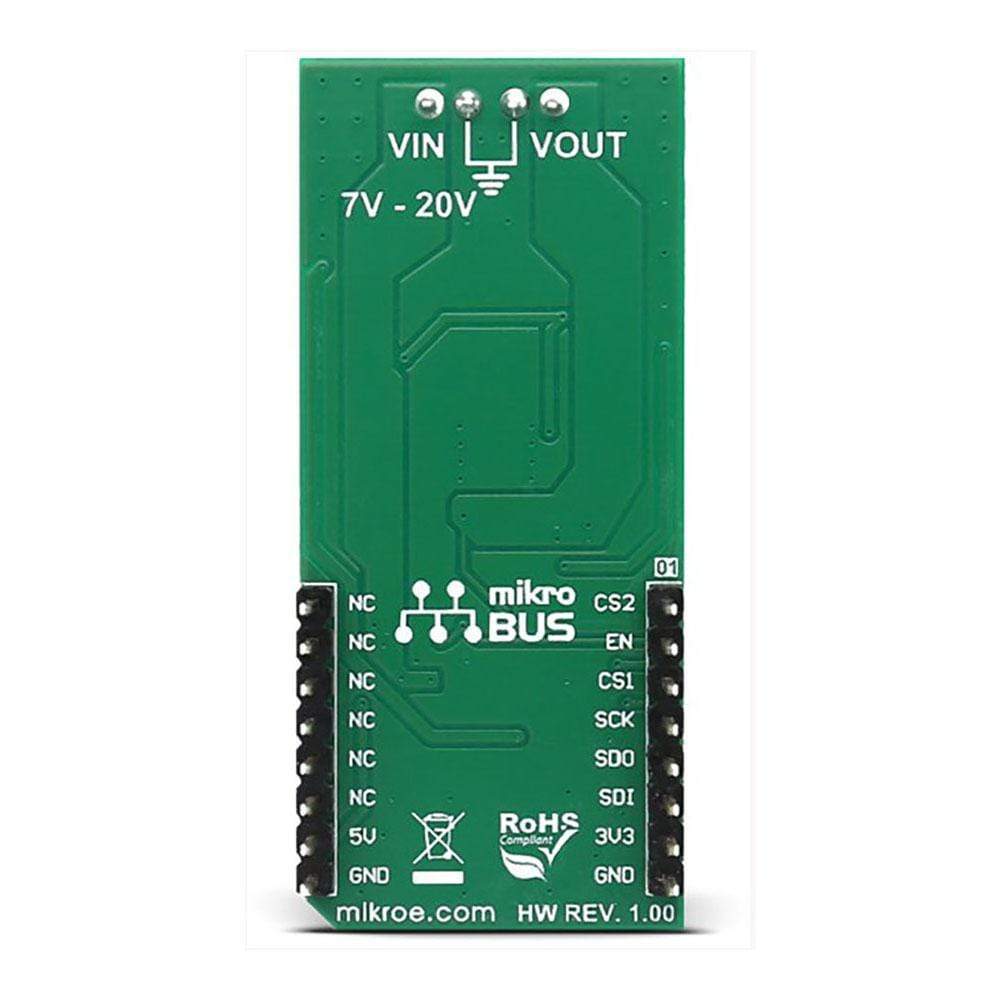
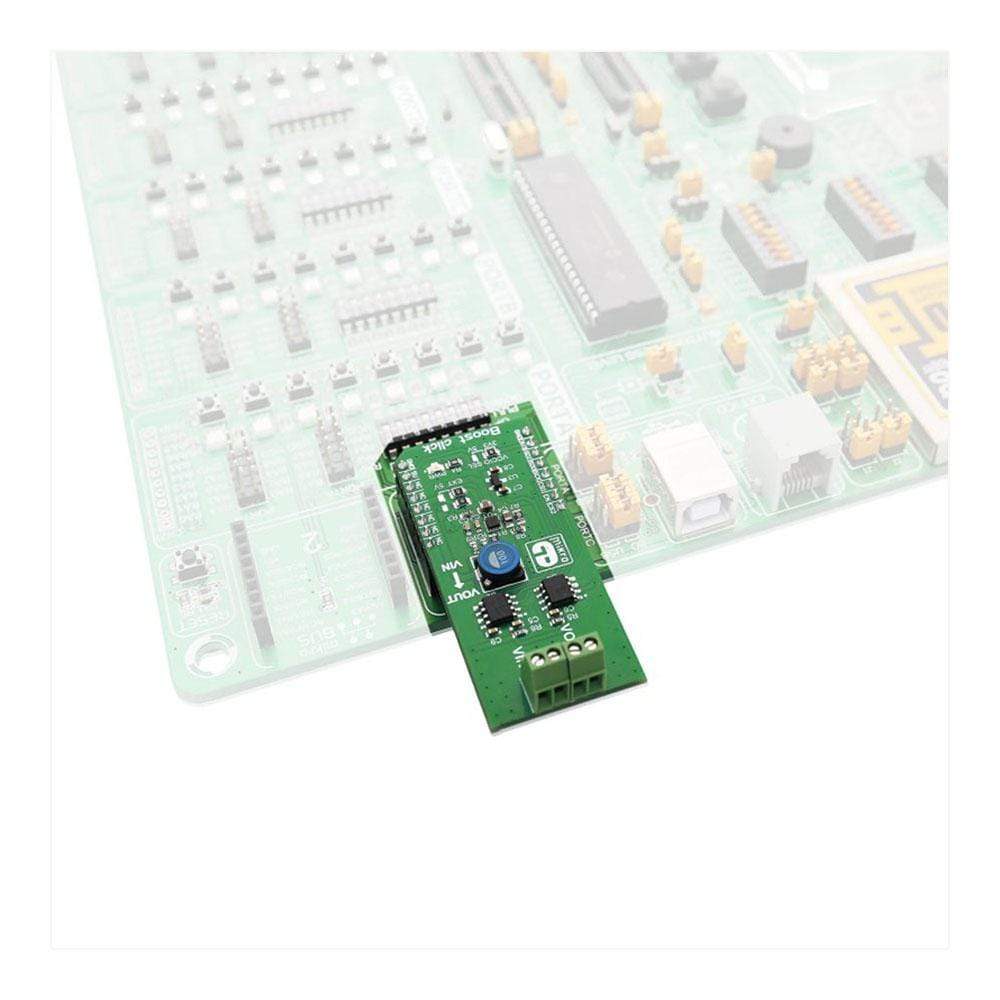
Overview
The Boost Click Board™ is based on Microchip's MIC2606, a 2MHz, PWM DC/DC boost switching regulator available in a 2mm x 2mm MLF package.
The Boost Click Board™ provides an adjustable output voltage through the onboard DAC that drives the FB pin of the MIC2606 to set the desired output voltage. The Click Board™ also has an onboard ADC that converts output voltage and sends its digital value through SPI pins of mikroBUS to the microcontroller.
Downloads
Le Boost Click Board™ est basé sur le MIC2606 de Microchip, un régulateur de commutation boost DC/DC PWM 2 MHz disponible dans un boîtier MLF de 2 mm x 2 mm.
La carte Boost Click Board™ fournit une tension de sortie réglable via le DAC intégré qui pilote la broche FB du MIC2606 pour définir la tension de sortie souhaitée. La carte Click Board™ dispose également d'un ADC intégré qui convertit la tension de sortie et envoie sa valeur numérique via les broches SPI du mikroBUS au microcontrôleur.
| General Information | |
|---|---|
Part Number (SKU) |
MIKROE-2780
|
Manufacturer |
|
| Physical and Mechanical | |
Weight |
0.025 kg
|
| Other | |
Country of Origin |
|
HS Code Customs Tariff code
|
|
EAN |
8606018711611
|
Warranty |
|
Frequently Asked Questions
Have a Question?
Be the first to ask a question about this.

